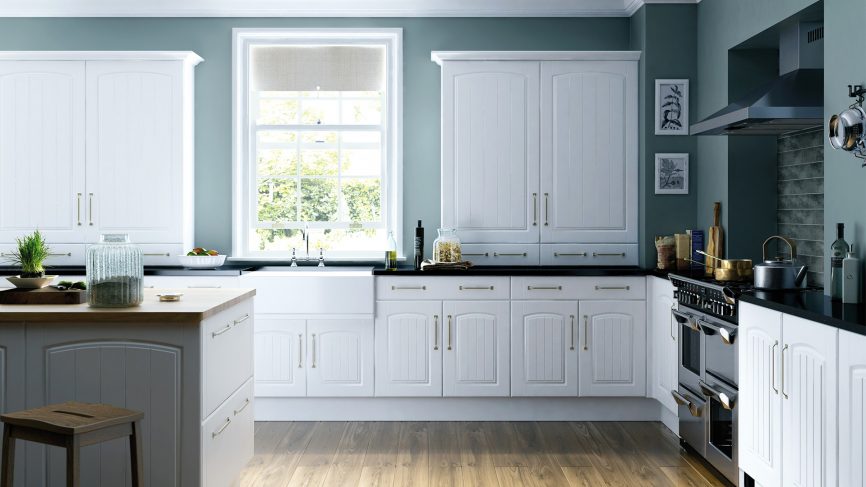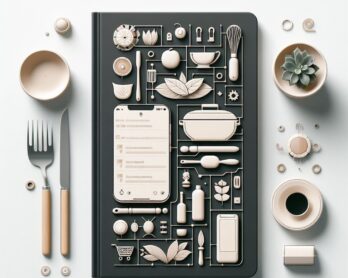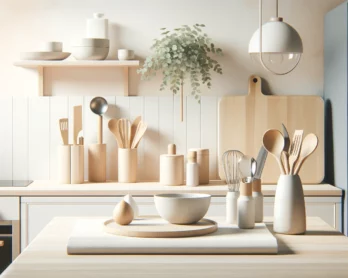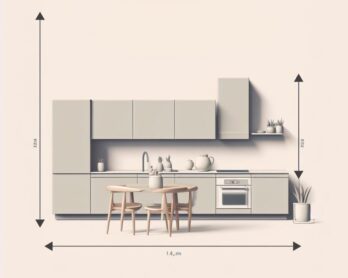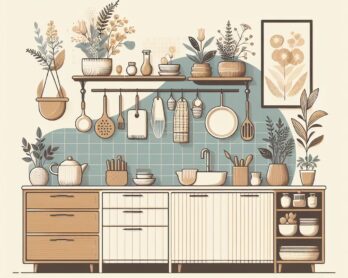We’ve all heard of Feng Shui, the Chinese practice of placement in space to achieve harmony. Now learn the Indian method, Vastu and its way to make The Harmonious Kitchen
Vastu Shastra (“abode knowledge” in Hindi) stems from a philosophy evolving from the Sixth to Seventh centuries. A precept of Hinduism, it’s a way of designing and creating space that is most agreeable for each individual.
Ideas of positive energy, peacefulness and balance are key to this philosophy.
By the way, you should not mix Vastu and Feng Shui practices – choose one that is right for your environment.
Vastu practitioners use a grid system of squares with each square ruled by a Vedic god and the sun’s path through the sky is a major influence on the design of rooms.
Why not bring Vastu to your kitchen? Here are some Vastu principles to consider:
- Place the oven so it is facing east when you are cooking as east represents fire and red its colour. This direction is also linked with appetite and digestion.
- Colours such as red (fire), green (harvest/fertility), yellow, blue and orange (purity) would be good to paint a kitchen.
- Keep your kitchen free of triangular, circular or irregular shapes – believed to lead to instability
- If you’re building a new home, place the kitchen in the southeast sector. Make sure it is next to the dining room and not next to the bathroom or main entrance to the house and NEVER put the kitchen in the centre of a house.
- The sink and dishwasher should be in the north part of the kitchen as well as anything to do with water.
- Heavy equipment such as the refrigerator and freezer should be in the west or southwest section of the kitchen.
- Windows in the kitchen should be facing east, north or northeast.
- Never have a kitchen in the northeast sector (known as the “gateway to the gods’).
- Electrical equipment such as microwaves, toasters, kettles and such should always be placed in the southeast (fire) corner of the kitchen.
- The kitchen is seen as a “wet room” and should therefore be always receive natural air and sunlight.
There is a heck of a lot more to the Vastu practice than I have outlined here. Do more research through the Vastu Living site.
I should also add some things concerning the dining area. Calming colours (pastels such as violet, pale peach, soft yellows and blues) are conducive to eating. Decorate the north wall with pictures of fruit (abundance) and consider subdued lighting.
China cabinets should be placed in the southwest section and the table leaning towards the east.
May your Vastu cooking and eating be harmonious!
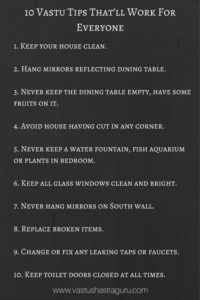
(With files from “Vastu in 10 Simple Lessons” by Bilkis Whelan)
| Image sources |
|---|
| https://www.architecturaldigest.in/content/vastu-home-interiors-6-tips-kitchen-decor/ |

